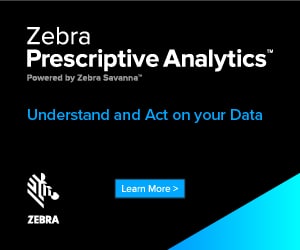
It’s happened to all of us in loss prevention (LP) at one point or another—the ask comes down from corporate to “do more with less.” These orders could take any of several forms:
- A reduction in force on your team leads to a lower headcount, but the workload remains the same.
- Changes on other teams place more responsibility on the plate of your team, however headcount levels remains static.
- Strategic decisions have been made that increase the complexity of your team’s roles.
Whatever the reason, “do more with less” orders end up having the same effect—you and your team must now execute on an increased span of responsibility, and “No, thanks” isn’t a viable answer.
As you begin to strategize how you’re going to tackle this new challenge, analytics will be your best friend. Every retail organization has a massive amount of data available and getting the right insights from that data will help you increase the efficiency of your team and turn a “do more with less” scenario into a “do more with data” situation. Here are a few ways in which analyzing your data will help.
Get People Where They Need to Be
We all know the 80-20 rule—80 percent of your concerns are typically generated by 20 percent of your locations. The first step in your analytics strategy will be to pinpoint those 20 percent of problematic locations and ensure your programs are effectively deployed across them.
Additionally, even though the other 80 percent of locations don’t contribute the lion’s share of the problem, issues will inevitably arise. Employee theft, poor management decisions, or a myriad of other occurrences can send shrink in these “normally good” locations on the upward trend.
An automated analytics platform, like prescriptive analytics, takes away some of the uncertainty by quickly alerting you when issues arise, such as an increase in compliance violations, high void rates, mis-shipments, and more. It further gives you the peace of mind that your low-risk locations are still being monitored at all times while your team focuses on more pressing needs. Should any of the low-risk locations show an increase in risky behaviors, your team will automatically be alerted.
Prioritize Your Team’s Work
Once you’ve identified the areas with the biggest impacts on shrink and other profit-reducing activities, it becomes critically important to identify and prioritize the locations most in need of intervention. By having an analytics system that can take in multiple sources of your organization’s data, you can empower your team to work with a single version of the truth—based on the facts. This means as team members prioritize their locations and plan their travel, they are considering all relevant factors and making a fully informed decision—unaffected by the inevitable bias of defensive store managers.
During a store visit a few years ago, I spoke with a store manager who was convinced his store’s shrink issues were driven by external theft. When confronted with the data that showed their known shortage was only a tiny fraction of their shrink loss, the manager began to realize that perhaps a more all-encompassing review of store operations would be worthwhile in tackling the store’s shrink.
Further, prescriptive analytics automatically calculates the monetary impact of any identified issues. This greatly simplifies the prioritization process by showing you and your team exactly which issues are most likely to balloon into bigger problems without immediate intervention.
Exceed Expectations
Most of the time, when an LP team’s responsibility or span of control increases, the organization expects the team to tread water while they acclimate to the new situation. But what if you were able to use analytics as a force multiplier and exceed the expectations of the organization?
If you are looking at the right data sets, automating complex analytical work, and generating valuable, prioritized actions for your team, you can deploy your precious resources where they are most needed, while allowing those teams who are performing successfully to continue achieving great results without being bothered.
One retailer that implemented prescriptive analytics was able to deliver investigative insights directly to its field team for the first time without needing intervention from the corporate analyst team (a much longer process). This empowered the field team to roll out new training and awareness programs and spend more time educating associates, while knowing that any critical issues would be communicated automatically if they arose.
Your team can become more self-sustaining because the data—and the insights within it—are always in their hands, ready to be acted on. With advanced analytics, your team’s value only increases thanks to the solution’s unmatched visibility to your organization. Even if you don’t have the bandwidth to have associates monitoring all your stores at once, you can rest assured that the analytics solution has you covered at all times.
For more information on using advanced analytics to empower LP teams, visit the Zebra website.
About the Author
Scott Pethuyne is a member of the Industry Solutions team at Zebra Analytics. He comes from an accomplished background in asset protection with tenures at Justice, Ascena Retail Group, and Designer Brands (formerly DSW). He uses his intimate knowledge of AP strategies and the Zebra Prescriptive Analytics solution to show retailers how to combat fraud, drive efficiency, and strengthen revenue and margins with Zebra Prescriptive Analytics.




